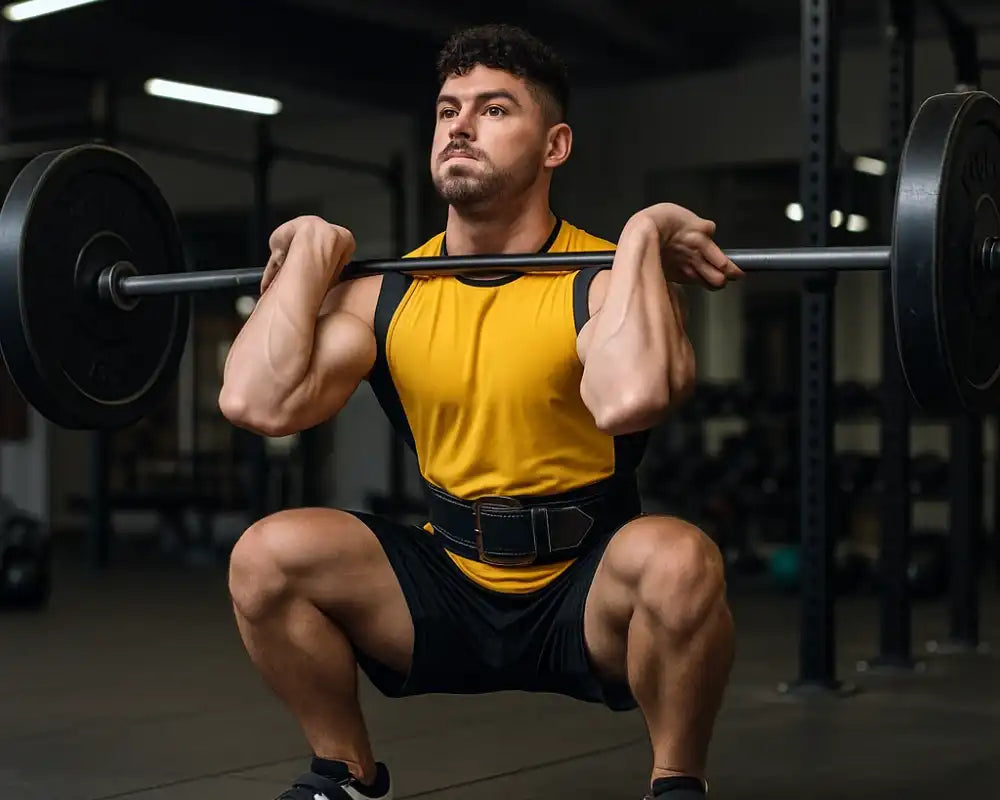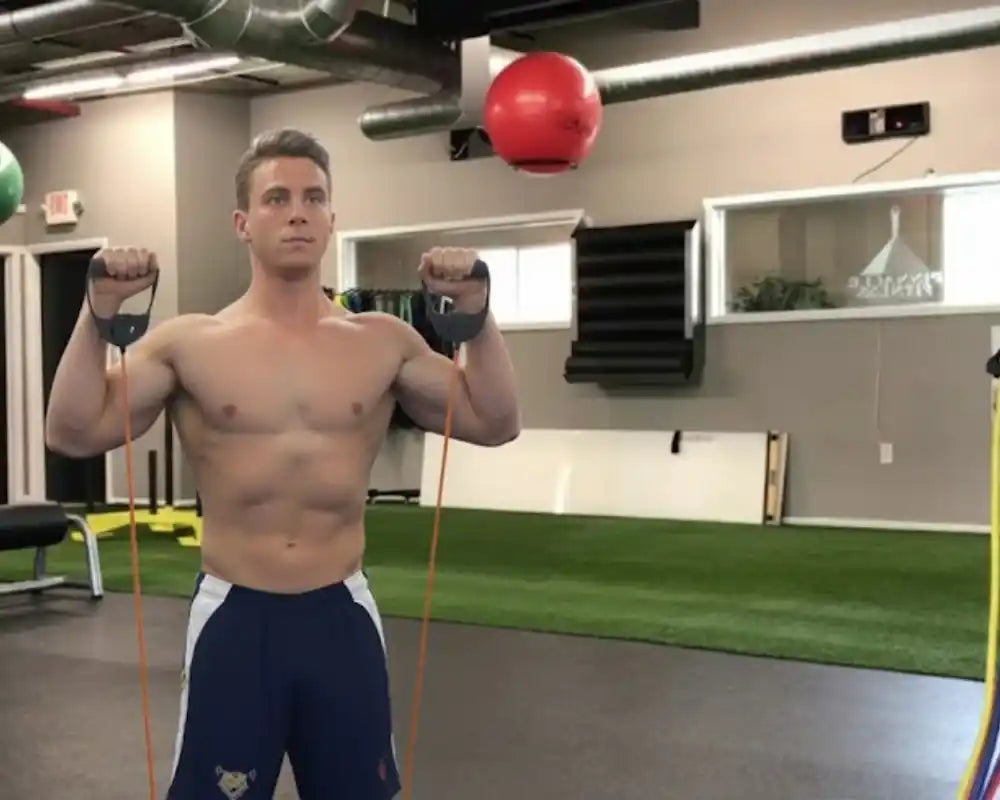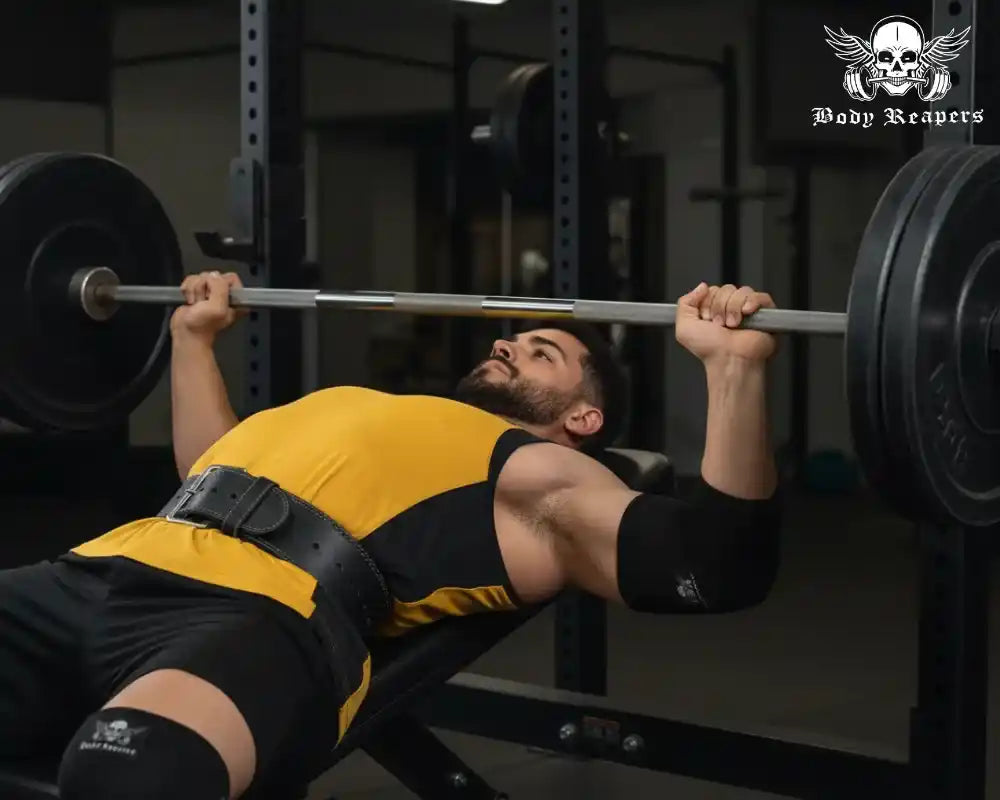Are you struggling with wrist pain during front squats? Does your grip fail before your legs do? You are not alone. Many lifters experience these frustrating limitations. The front rack position demands significant wrist and shoulder mobility that many people lack.
This mobility limitation often forces compensations. You might round your upper back or drop your elbows. These form breakdowns reduce exercise effectiveness and increase injury risk.
Squat straps offer a simple solution. They attach to the barbell, providing a secure grip without straining your wrists. This simple tool can transform your training experience and results.
This guide will teach you to use squat straps properly. You will learn to improve form, increase strength, and train pain-free.
Why Use Squat Straps? Key Benefits Explained
Squat straps are not just a "biomechanical training aid." They are a strategic training implement that solves real problems for lifters at all levels.

1- Improve Grip and Security
A lifting strap holds you more firmly to the barbell. They stop the bar from sliding when you are moving. This will make the training process much safer. You will feel less stress about dropping weight and more focus on moving weight.
2- Compensate for Limited Mobility
To perform front squats, one must demonstrate significant wrist extension and shoulder mobility. This type of flexibility is one that most lifters don't possess. Straps help you avoid bending your wrist more than necessary. Despite some mobility restrictions, they make access to and comfort in the front rack position all the more attainable.
3- Increase Focus on Target Muscles
By eliminating grip concerns, straps allow better mind-muscle connection. You can focus entirely on driving through your legs and engaging your core. This leads to better muscle activation and growth over time.
4- Maintain Better Form
Form breakdown often begins with upper body instability. Squat straps help maintain proper positioning: upright torso, high elbows, and tight upper back. Good form makes workouts more effective and reduces the risk of injury.
5- Train Around Injuries
Straps enable training while nursing wrist, elbow, or shoulder injuries. They provide a pain-free alternative when traditional grips are not possible.
Read More: Reasons for Lower Back Pain When Squatting
How to Use Squat Straps for Front Squats: Step-by-Step Guide
Using squat straps correctly is essential for safety and performance. Follow these steps precisely.

Step 1: Choose the Right Straps
Choose sturdy straps made of tough fabrics such as heavy-duty cotton or nylon. Avoid Olympic lifting straps, which are typically too short.
Body Reapers Lifting Straps feature orthopedically designed padding exactly where pressure is greatest. Experience the difference of straps crafted with orthopedic logic for superior comfort and support on every moderate to heavy lift.
Step 2: Attach Straps to Barbell
Set the barbell at upper chest height in a squat rack.
Place each strap across the bar in the same place where your hands would normally grip.
Wrap the long end around the bar, then pull the long end through the loop at the wrist.
Check that both straps are symmetrical, the same distance off center.
Step 3: Secure Your Grip
Wrap the dangling strap end around your hand once.
Ensure a secure wrap without overlapping the strap excessively.
Maintain the ability to release quickly if needed for safety.
Step 4: Assume Starting Position
Get under the bar with it resting on your front deltoids.
Keep elbows high, creating a shelf with your shoulders.
Take care that your forearms are precisely parallel to the ground.
Squeeze the straps tightly while maintaining an upright torso.
Step 5: Execute the Squat
Breathe deeply, engage your core.
Squat down, maintaining high elbows and an upright torso.
Drive through your entire foot to return to standing.
Keep constant tension on the straps throughout the movement.
Step 6: Safely Rack the Bar
After completing reps, walk forward until the bar contacts the rack.
Bend your knees to set the bar on hooks.
Never release straps before the bar is securely racked.
Related Aricle: How to Pick the Right Knee Sleeves for Squats
Common Mistakes and How to Avoid Them
Even with straps, technique is everything. Here's what to watch out for.
1- Don't Forget Your Form. Straps help your upper body, but they don't brace your core for you. You still need to maintain a tight torso and an upright chest. Don't get lazy!
2- Don't Use Them as a Crutch. Straps are a tool to help you train around a limitation, not a replacement for fixing it. You should still be working on your wrist and shoulder mobility separately. Use straps for your heaviest sets, but practice without them during warm-ups.
3- Don't Ignore the Warning Signs. If you feel any new or sharp pain, even with straps, stop. Listen to your body. It's always the ultimate authority
Training Smarter: An Expert's Perspective
As a trainer, I always tell my clients that the best program is the one you can do consistently and without pain. Squat straps are a perfect example of a support gear that promotes consistency.
I encourage lifters to strategically integrate them. Use them on your top working sets where grip or mobility would otherwise be the limiting factor. On your lighter, technique-focused days, practice without them to continue improving your mobility.
Remember, the goal is long-term progress. By managing the stressors on your joints today, you ensure you can keep training hard for years to come.
Body Reapers offers squat straps designed with orthopedic logic for the ultimate in comfort, support, and durability. Experience the difference of straps crafted with orthopedic logic for superior comfort and support on every moderate to heavy lift. Shop now and take your training to the next level.





Leave a comment
This site is protected by hCaptcha and the hCaptcha Privacy Policy and Terms of Service apply.